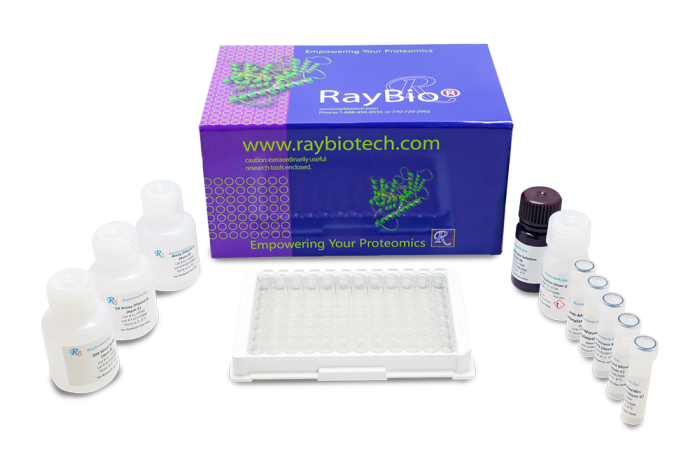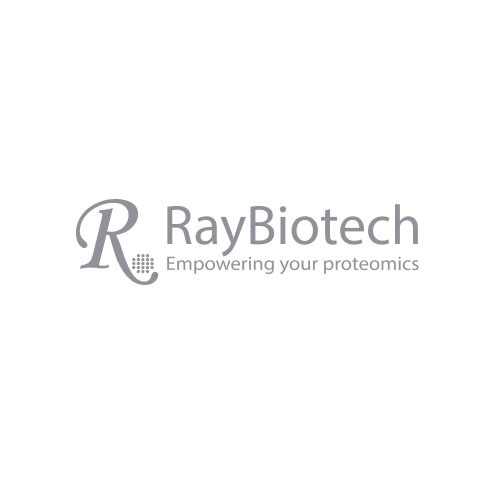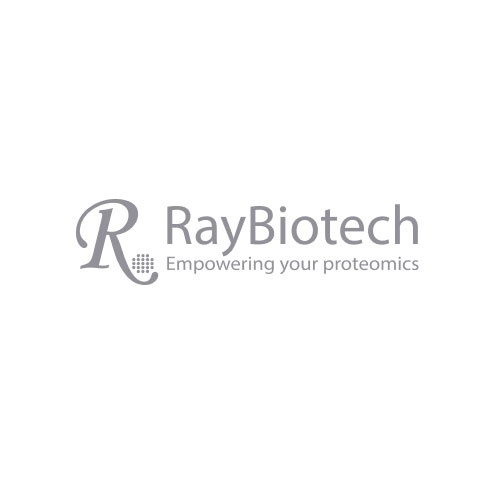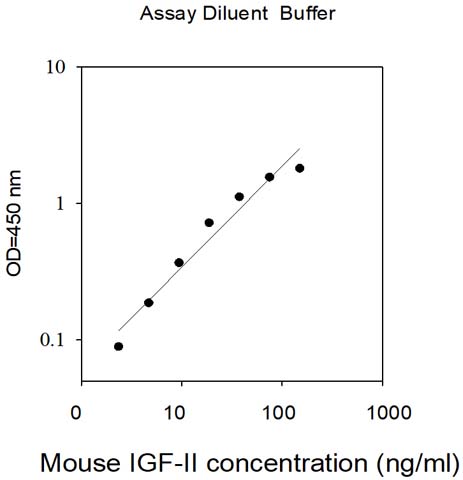RayBio® Mouse IGF-2 ELISA Kit for Cell Culture Supernatants samples.
Lead time: Typically ships within 1-2 business days. No Friday shipments.
Product Description
Specifications
| Size | 1 Plate Kit, 2 Plate Kit, 5 Plate Kit |
|---|---|
| Species | Mouse |
| Accession Number | P09535 |
| Gene Id | 16002 |
| Gene Symbols | IGF2|IGF-2 |
| Protein Name / Synonyms | Insulin-like growth factor II (IGF-II) (Multiplication-stimulating polypeptide) [Cleaved into: Insulin-like growth factor II Preptin] |
| Quantitative/Semi-Quantitative | Quantitative |
| Specificity | The antibody pair provided in this kit recognizes mouse IGF-II (for Cell Culture). |
| Compatible Sample Types | Cell Culture Supernatants |
| Solid Support | 96-well Microplate |
| Method Of Detection | Colorimetric |
| Design Principle | Sandwich-based |
| Sensitivity | 1500 pg/ml Need more sensitivity? Check out the new BIQ-ELISA™ kit for this target. Still not enough? Then your answer is our Ultrasensitive Biomarker Testing Service powered by Simoa™ technology. |
| Estimated Lead Time | 1-2 business days |
| Shipping Type | Blue ice |
| Storage | ≤-20°C |
Risk-Free Guarantee
We offer a 100% guarantee on all ELISA kits and membrane cytokine arrays.
Learn More
Amazon Gift Cards!
$5 Amazon gift card in every kit box purchased.
Linder M., Hecking M., Glitzner E., et al. EGFR controls bone development by negatively regulating mTOR-signaling during osteoblast differentiation. Cell Death Differ. 2018 Feb 14. doi: 10.1038/s41418-017-0054-7
Species:
Mouse
Sample Type:
Conditioned Media (Osteoblast culutres at 14 days after differentiation; bone development)
Dobie R., Ahmed S., Staines K., et al. Increased linear bone growth by GH in the absence of SOCS2 is independent of IGF-1. J Cell Physiol. 2015 Nov;230(11):2796-806. doi: 10.1002/jcp.25006.
Species:
Mouse
Sample Type:
Conditioned Media ( from SOCS2-/- mice cultures in growth hormone)
Talbot N., Sparks W., Powell A., et al. Quantitative and semiquantitative immunoassay of growth factors and cytokines in the conditioned medium of STO and CF-1 mouse feeder cells. In Vitro Cell Dev Biol Anim. 2012 Jan;48(1):1-11. doi: 10.1007/s11626-011-9467-7
Species:
Mouse
Sample Type:
Conditioned Media (Primary CF-1 fibtoblasts from 13.5d fetsus of CF-1 mice, and STO fibroblasts)
Linder, M., Hecking, M., Glitzner, E. et al. EGFR controls bone development by negatively regulating mTOR-signaling during osteoblast differentiation. Cell Death Differ 25, 1094-1106 (2018). https://doi.org/10.1038/s41418-017-0054-7
Species:
Mouse
Sample Type:
Conditioned media (supernatants from osteoblast cultures)
Write Your Own Review






